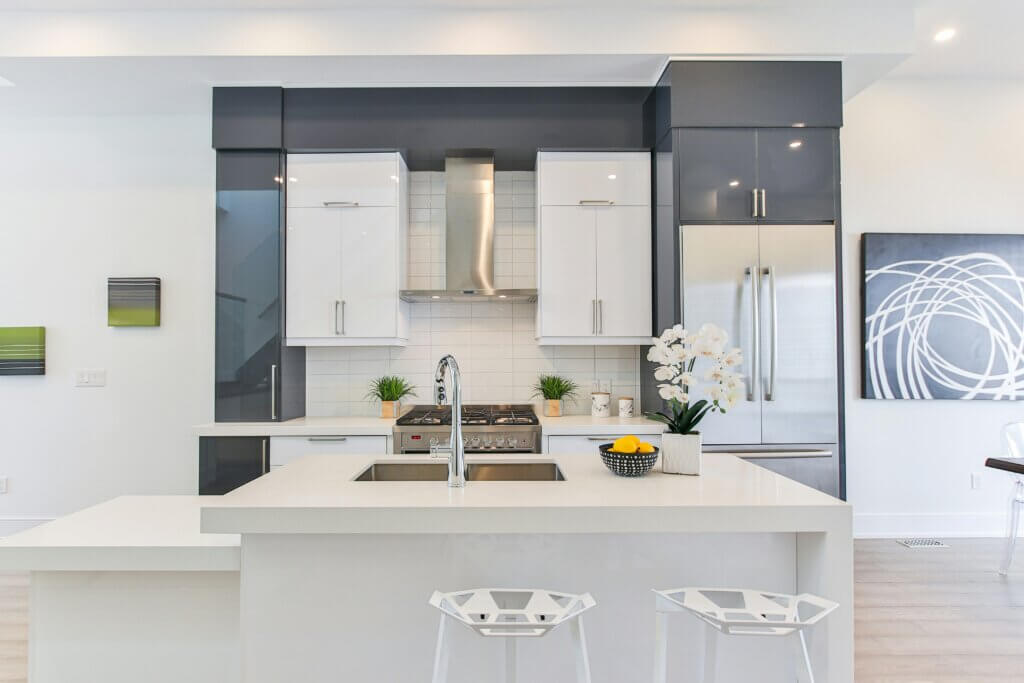A minimalist kitchen design is the ultimate expression of modern style combined with practicality. It prioritizes clean lines, clutter-free surfaces, and efficient use of space, creating a cooking area that feels open, serene, and inviting. Whether you have a sprawling kitchen or a compact nook, minimalist design principles can transform your kitchen into a timeless, functional space.
This article explores the essentials of minimalist kitchen design, offering tips and ideas to help you craft a stylish, streamlined kitchen tailored to your lifestyle.
What Is Minimalist Kitchen Design?
Minimalist kitchen design focuses on simplicity, eliminating unnecessary details and emphasizing functionality. The aesthetic is characterized by:
Clean, flat cabinetry with little or no ornamentation.
Neutral or monochromatic color palettes.
Efficient and well-organized storage solutions.
Minimal decorative elements.
Integration of modern appliances for seamless appearance.
Use of natural light and reflective surfaces to enhance space.
Minimalist kitchens create a peaceful environment, reducing stress and enhancing the joy of cooking and entertaining.
Key Principles of Minimalist Kitchen Design
Simplicity and Clean Lines
Opt for cabinetry and furniture with smooth, flat surfaces. Avoid intricate moldings or heavy detailing. Straight lines and geometric shapes dominate the design.
Neutral and Monochrome Colors
Whites, grays, blacks, and natural wood tones create a cohesive, calming color scheme. Monochrome palettes help open up space and allow natural materials or accents to stand out.
Smart Storage Solutions
Ample storage is essential in minimalist kitchens to maintain clutter-free surfaces. Incorporate deep drawers, pull-out pantries, and hidden cabinets. Built-in storage under countertops and islands keeps essentials out of sight.
Integrated Appliances
Conceal appliances like refrigerators, dishwashers, and microwaves behind cabinetry panels to maintain a seamless look.
Efficient Layout
Minimalist kitchens favor layouts that optimize workflow and space use—such as U-shaped, L-shaped, galley, or open-concept kitchens.
Quality Materials and Textures
Use natural materials like wood, stone, and metal to add warmth and texture while keeping the design simple. Matte and glossy finishes can both work, depending on the desired ambiance.
Minimal Decor
Limit decorative items to a few functional pieces, such as a stylish bowl of fruit or a plant. Avoid cluttering countertops or walls with unnecessary items.
Ideas for Minimalist Kitchen Design
1. Flat-Front Cabinetry with Handleless Doors
Choose handleless cabinets or simple integrated pulls. This keeps the surfaces uninterrupted and visually smooth, reinforcing the minimalist look.
2. Neutral Palette with Natural Wood Accents
Combine white or gray cabinets with natural wood elements, like a wooden island countertop or open shelving, to add warmth and contrast.
3. Quartz or Marble Countertops
Durable and elegant, quartz or marble countertops complement minimalist cabinetry perfectly. Their smooth surface contributes to the clean, uncluttered aesthetic.
4. Open Shelving for Essentials
Include a few open shelves to display everyday items or decorative pieces, but keep the display minimal and organized to avoid clutter.
5. Integrated Lighting
Use under-cabinet lighting, recessed ceiling lights, and minimalist pendant lamps to provide ample task lighting and enhance the ambiance.
6. Hidden Appliances
Appliances with cabinet fronts or those built into cabinetry maintain the sleek appearance of the kitchen.
7. Streamlined Fixtures
Choose simple, modern faucets and sinks with clean lines in stainless steel or matte finishes.
Practical Tips for Achieving a Minimalist Kitchen Design
Declutter Regularly: Keep only what you use daily on countertops. Store extras in hidden cabinets or drawers.
Use Multi-Functional Furniture: Islands or carts with built-in storage add workspace and reduce clutter.
Maintain Cohesive Color Scheme: Ensure cabinets, counters, and flooring complement each other.
Optimize Vertical Space: Tall cabinets or wall-mounted racks increase storage without taking up floor area.
Choose Quality over Quantity: Invest in durable, timeless materials and appliances to avoid frequent replacements and maintain elegance.
Common Mistakes to Avoid
Overloading Counters: Even in minimalist kitchens, some clutter is inevitable, but excessive items detract from the style.
Neglecting Lighting: Poor lighting ruins the clean look and functionality. Layered lighting is key.
Ignoring Functionality: A beautiful kitchen must also be practical. Plan layout and storage carefully.
Choosing Harsh Color Contrasts: While contrast can be striking, too much can break the calmness of a minimalist kitchen.
Conclusion
Minimalist kitchen design is an elegant, timeless way to create a space that is both beautiful and functional. By focusing on clean lines, neutral palettes, hidden storage, and quality materials, you can craft a kitchen that feels spacious, organized, and inviting. Minimalism encourages you to focus on essentials and enjoy a clutter-free environment, making your kitchen a joy to use every day.

